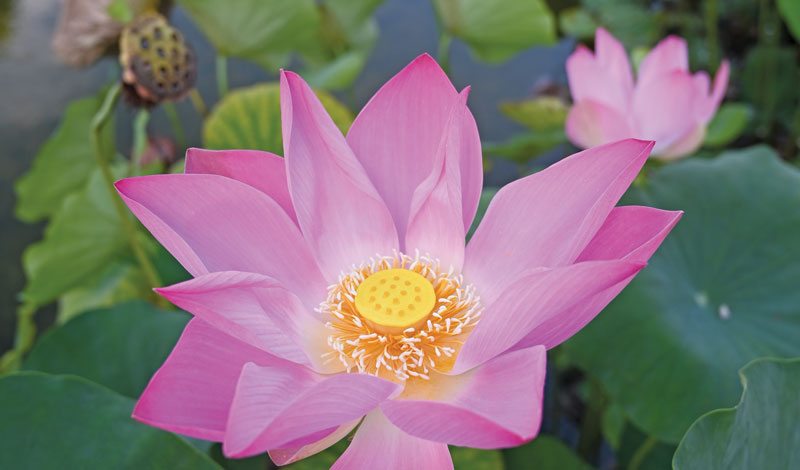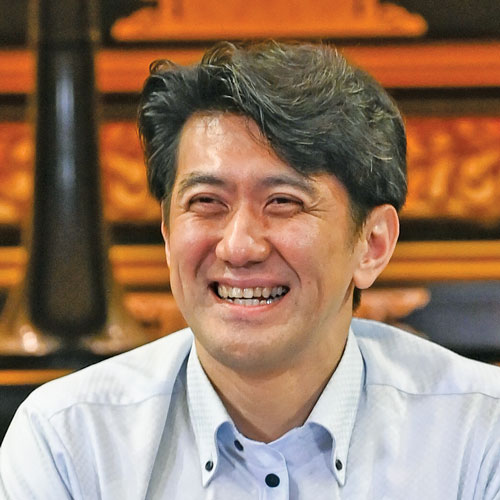
At the SGI Study Conference, held from August 22 to 25 at the Florida Nature and Culture Center, SGI Study Department Leader Seiichiro Harada lectured on one of Nichiren Daishonin’s major works, “The Opening of the Eyes.” Over the weekend, 160 region through national leaders from around the country, including Hawaii and the Caribbean, gathered to deepen their understanding of this essential writing. The following are the key points from Harada’s first lecture, which provided an overview of the “The Opening of the Eyes.”
Nichiren completed “The Opening of the Eyes,” in February 1272, at age 51, during his exile on Sado Island. While addressed to Shijo Kingo, he wrote it for all his disciples. This writing clarifies the role of Shakyamuni Buddha and Nichiren himself, his vow to widely spread the Mystic Law, the principle of “casting off the transient and revealing the true,” and the spirit to strive together with one’s mentor in faith. (For more coverage of the weekend’s activities, see the September 5, 2025, World Tribune, pp. 6–7.)
The Buddhism of the people
In his lecture series on “The Opening of the Eyes,” Ikeda Sensei explains that “opening the eyes” means not only to “open your eyes to Nichiren” but also to “open your eyes to the human being” and to “open your eyes to the people” (The Opening of the Eyes: SGI President Ikeda’s Lecture Series, p. 13).
Expanding on this, Harada explained that “opening our eyes” means realizing that any individual can become a person of great stature when they rise up based on their vow for kosen-rufu. While Nichiren was exceptional, he stressed, “truly exceptional is when the people are awakened to their mission.”
Unlike religions where an enlightened figure “saves” the people, Buddhism teaches that ordinary people are inherently remarkable and can elevate their lives to the same state as the Buddha. “This makes the people the main players,” Harada said. “The Buddha exists to serve the people.”
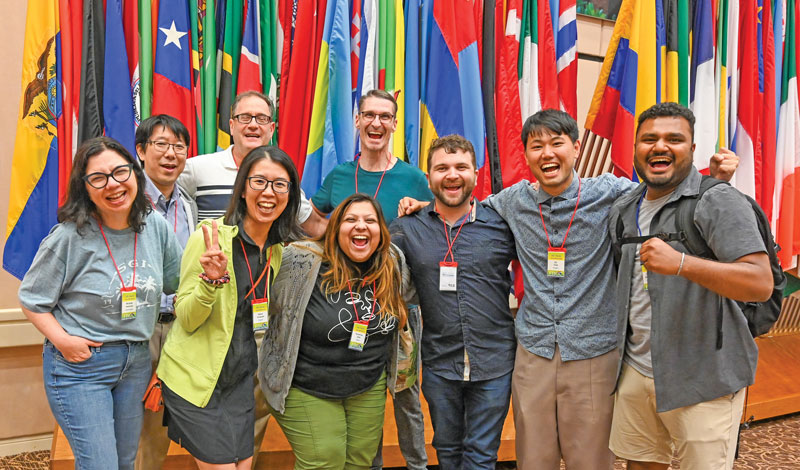
The equality of Nichiren and Shakyamuni
At the conclusion of “The Opening of the Eyes,” Nichiren writes:
I, Nichiren, am sovereign, teacher, and father and mother to all the people of Japan. (“The Opening of the Eyes,” WND-1, 287)
Based on this statement the Soka Gakkai views Nichiren Daishonin as the Buddha of the Latter Day of the Law.
The Nichiren Shoshu priesthood, however, created a hierarchy by characterizing Nichiren as a transcendent figure, while reducing Shakyamuni to a lesser status. They elevated their high priest to Nichiren’s level and placed lay believers beneath the priesthood—a view that directly contradicts Nichiren’s writings.
“Sensei often said,” Harada clarified, “that there is no Buddha who exists apart from human beings. The dignified life state of the Buddha emerges from within a person who selflessly and unhesitatingly dedicates their life to spreading the Law. This is the essence of Buddhist humanism.”
Contrary to what the priesthood teaches, Nichiren expressed reverence to Shakyamuni as the fundamental Buddha. He correctly understood Shakyamuni’s teaching, perceived that the core and essence of the Lotus Sutra is Nam-myoho-renge-kyo and established the teaching to lead all people in the Latter Day to enlightenment.
As Harada explained: “Both Shakyamuni and Nichiren attained enlightenment based on the fundamental Law of Nam-myoho-renge-kyo. There is no need to say one is a provisional Buddha and the other is the true Buddha.” Shakyamuni is not better than the Daishonin or vice versa. They are equal.
Unlike the priesthood, the Soka Gakkai does not deify the Daishonin. Rather, we see him as a person who “through his behavior as a real human being exemplified what it means to be a Buddha of the Latter Day,” Harada said.
Making a vow is the fundamental principle of change
Harada emphasized these words from Sensei’s lecture:
A vow in Buddhism can be likened to the power with which to sever the chains of karma, to free oneself from the fetters of the past and to forge a self that can look with hope to a new future. In other words, the power of a vow enables us to develop ourselves through the Buddha’s teachings, to take charge of our own future direction based on a solid sense of self and to keep on making efforts toward that end.
Making a vow, then, is the fundamental principle of change. (The Opening of the Eyes: SGI President Ikeda’s Lecture Series, p. 57)
Through carrying out our vow for kosen-rufu, Sensei said, “we can become one with the heart of the Buddha and bring forth the limitless power of Buddhahood from our lives.
“In a defiled age, it is only through the power of a vow for the enlightenment of all people that we can defeat the evil functions that seek to incite distrust and doubt” (The Opening of the Eyes: SGI President Ikeda’s Lecture Series, p. 58).
For Nichiren, his vow can be seen in these lines of “The Opening of the Eyes”:
Nevertheless, I vowed to summon up a powerful and unconquerable desire for the salvation of all beings and never to falter in my efforts. (WND-1, 240)
Harada explained: “As ordinary people, when we uphold our vow by carrying through with our faith, the Buddha nature that resides in the depths of our lives emerges, enabling us to overcome our struggles and transform our life.”
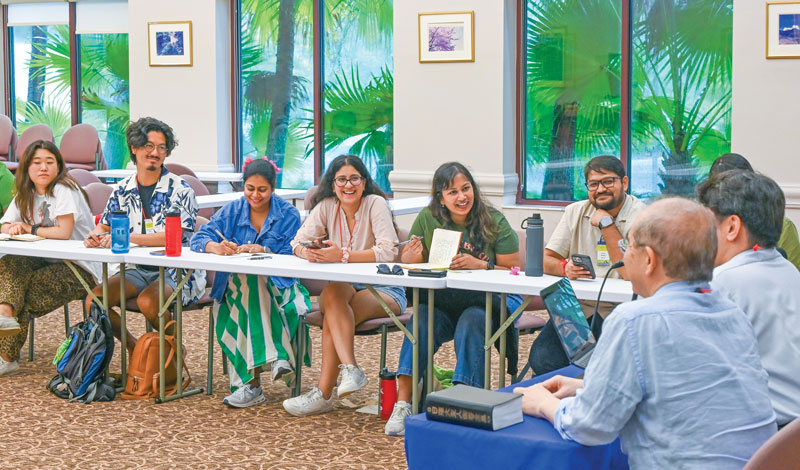
Casting off the transient and revealing the true
In the final part of this lecture, Harada touched on Nichiren’s “casting off the transient and revealing the true.” During the Tatsunokuchi Persecution and his near-execution, “a brilliant orb as bright as the moon” (“The Actions of the Votary of the Lotus Sutra,” WND-1, 767) shot across the sky, disrupting the execution attempt.
What does it mean that Nichiren cast off the transient and revealed the true?
In overcoming the Tatsunokuchi Persecution, the Daishonin had cast off his identity as a deluded, ordinary person mired in karma and suffering and opened up and revealed his true identity, or his inherent, original and essential life state of Buddhahood overflowing with compassion and wisdom.
Sensei says:
By practicing as the Buddha taught, with selfless dedication, [Nichiren] revealed the state of Buddhahood that is originally inherent in the lives of all ordinary people in the Latter Day. (June 2022 Living Buddhism, p. 57)
• • •
“Casting off the transient and revealing the true” does not mean becoming someone special, something beyond an ordinary human being. It means taking action as a bodhisattva in the real world, in society. This is the essence of the principle of the “mutual possession of the Ten Worlds” taught in the Lotus Sutra.
In other words, the Daishonin’s inner life state was that of the eternal Buddha, the Buddha of time without beginning. But in his outward actions in the real world, he behaved as Bodhisattva Superior Practices, the leader of the Bodhisattvas of the Earth whom Shakyamuni charges with the mission of propagating the Lotus Sutra in the evil latter age after his passing. (June 2022 Living Buddhism, p. 59)
Harada added that the essence of casting off the transient and revealing the true is that “as an ordinary person, we can bring forth our inherent Buddha nature, our original state of life, and express what that looks like in the life of a single individual.”
He emphasized that, just as Nichiren did, “every person in the Latter Day is able to open up and demonstrate the life state of Buddhahood,” showing that this principle applies to all humanity.
Harada urged, “Let’s stand with the conviction that, in upholding the same vow for kosen-rufu as Nichiren Daishonin and in unhesitatingly fighting to realize our mission as Bodhisattvas of the Earth, the Soka Gakkai as well as each of us are casting off the transient and revealing the true.”
Finally, he reminded everyone of the lineage of the Buddhism of the people—from Shakyamuni to Nichiren and now to the Soka Gakkai.
Making a vow means undefeatable faith
One of the most well-known passages from “The Opening of the Eyes” reads:
Although I and my disciples may encounter various difficulties, if we do not harbor doubts in our hearts, we will as a matter of course attain Buddhahood. Do not have doubts simply because heaven does not lend you protection. Do not be discouraged because you do not enjoy an easy and secure existence in this life. This is what I have taught my disciples morning and evening, and yet they begin to harbor doubts and abandon their faith.
Foolish men are likely to forget the promises they have made when the crucial moment comes. (WND-1, 283)
Nichiren’s words “I and my disciples” exude the same spirit of his words from another writing: “My disciples, form your ranks” (“The Actions of the Votary of the Lotus Sutra,” WND-1, 765). Both phrases express his deep compassion and the unity of mentor and disciple at the heart of this Buddhism.
We each possess Buddhahood, although illusion and suffering often prevent us from revealing it. Nichiren brought forth his Buddha nature, demonstrating it through his humanistic behavior and composure amid many trials. And he repeatedly encouraged his disciples that all people can summon the same state of life.
He assures us that when we uphold faith together with him, “we will as a matter of course attain Buddhahood.” That is, as long as “we do not harbor doubts in our hearts,” we will achieve enduring, genuine happiness. Doubt and discouragement are stubbornly powerful manifestations of our fundamental ignorance. That is why, in times of challenge, rather than giving in to such tendencies, we need the sharp sword of faith to cut through our fundamental ignorance. Harada stressed the importance of recognizing that our struggles are “crucial moments” where we must strengthen our faith and face and overcome each obstacle head-on.
Harada concluded: “No matter what happens, do not harbor doubts. No matter the circumstances, do not be discouraged. A person who has such powerful, resilient and persevering faith fears nothing. Let’s have absolute conviction that striving in faith with the spirit that ‘now is the crucial moment’ is how we bring forth our brilliant Buddhahood!”
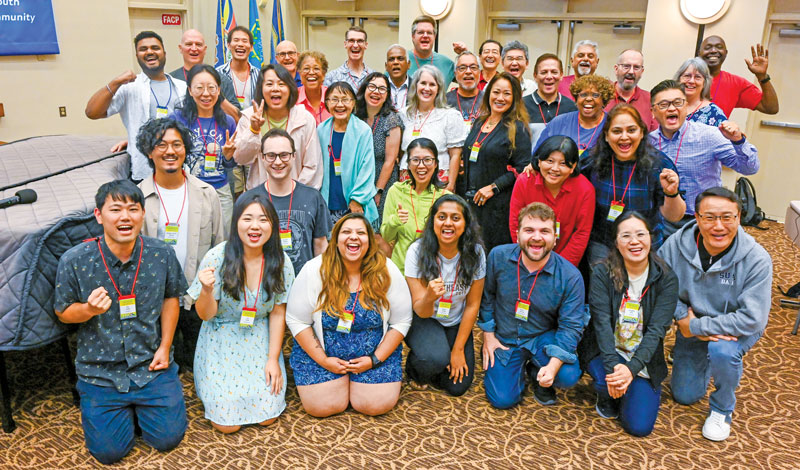
There Are No Distinctions Between Mentor and Disciple
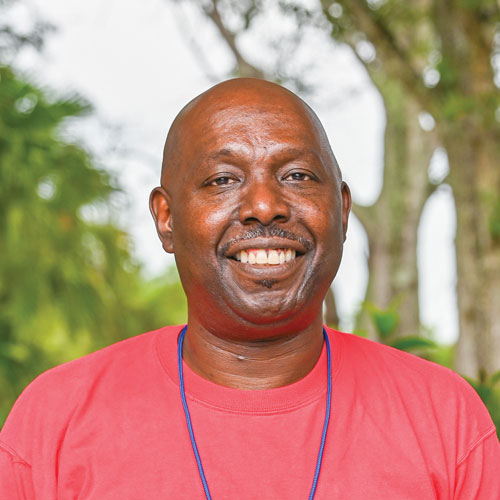
Khalik Alexander / Elk Grove, Calif.
Living Buddhism: Khalik, thank you for sharing your impressions about the study conference at FNCC in August. Can you tell us a little about how you started practicing Buddhism?
Khalik Alexander: When I was around 4 years old, my mom came home, and in lieu of food, brought back Nam-myoho-renge-kyo. She taught us all, me and my six brothers and sisters, how to say the words. Then, we held hands and chanted single-
mindedly to get away from my dad. That was our united prayer. My mother sent all of us away to my grandmother’s home in 1974, and when we returned in 1975, she had received the Gohonzon.
One of my greatest experiences is transforming my heart from someone who wanted to kill my father for the unhappiness he caused our family to deciding that I would introduce him to the practice to repay my debt of gratitude. And we did. In 1996, my siblings and I found our father. And, in 2005, after witnessing the incredible care of SGI members during my mother’s final chapter in life, he officially became an SGI member before he passed in 2006.
Wow. What an incredible story. What was your biggest takeaway from attending the study conference?
Khalik: It was so refreshing. Every time I think I’ve hit my ceiling in terms of Buddhist learning, I get to expand. I never want to be entangled in my own arrogance or self-satisfaction. To be in this forum where we could have this incredible dialogue and depth of study with this great assembly of people rejuvenated my life.
Was there something that you took from the conference and applied to your life?
Khalik: The biggest thing is that I was reminded of the power of daimoku and the power we have as human beings—as Buddhas. It reignited a flame of faith in my life. My daimoku was enhanced.
I was so encouraged by the way the conference ended, with a focus on shakubuku. Sometimes you can become disenchanted with what’s going on in the world. Mr. Harada, based on Sensei’s lectures, shared that shakubuku is deeply rooted in compassion and explained how that’s tied to courage. One can’t help but feel tremendous joy, when shakubuku is done with the life condition of jiyu (Bodhisattva of the Earth).
This is just an analogy. Say you compete in martial arts, and you feel like you’re getting beat in the tournaments. And then, your instructor gives you a whole new bag of techniques. Then you feel: Let me in, coach! I got it! This idea that shakubuku is rooted in compassion expands my joy to talk with even more people about Buddhism with greater hope and vigor!
In one of the lectures, Mr. Harada spoke about Shakyamuni and Nichiren Daishonin and their respective roles in Buddhism. What did you take from that lecture?
Khalik: Mr. Harada spoke about the equality of people. This is the essence of Buddhism. During gongyo, we recite the part where Shakyamuni makes a declaration to make people equal to him without any distinction. He didn’t say, “to be close to me” or “kind of like me.” He said “make them equal to me.” As a person of African descent, and with the history of my people in this country and indeed the world over, this spirit resonates deeply. It removes any distinctions between mentor and disciple and truly expresses the significance and value of their oneness.
The Nichiren Shoshu priesthood has taught that Nichiren was superior to Shakyamuni, deifying him and saying that this special life condition of Nichiren can only be transmitted through successive high priests. This is a distortion.
Shakyamuni passed the baton to Nichiren—the passing of the baton from mentor to disciple. They have distinct missions just like we each have our own missions to bring Sensei’s heart into different spaces. If you are doing what the Buddha did, you are of the same mind as Nichiren. If you are doing as the Buddha did, you are of the same mind as Sensei. There is no hierarchy. You’re a Buddha. I’m a Buddha. Our mentors are Buddhas. We are of the same heart, the same mind and the same spirit—we have the same fight.
What are your determinations?
Khalik: Personally, I’m chanting for deeper family unity, an ongoing challenge that I’m determined to transform! I’m a region vice men’s leader, and our region is determined to have a starburst of youth in Sacramento. We meet every Wednesday for a chanting session with the purpose of encouraging, supporting and igniting our youth. As a result, the district leaders are standing up with the same determination to introduce youth. We are seeing a lot of activity right now in our region!
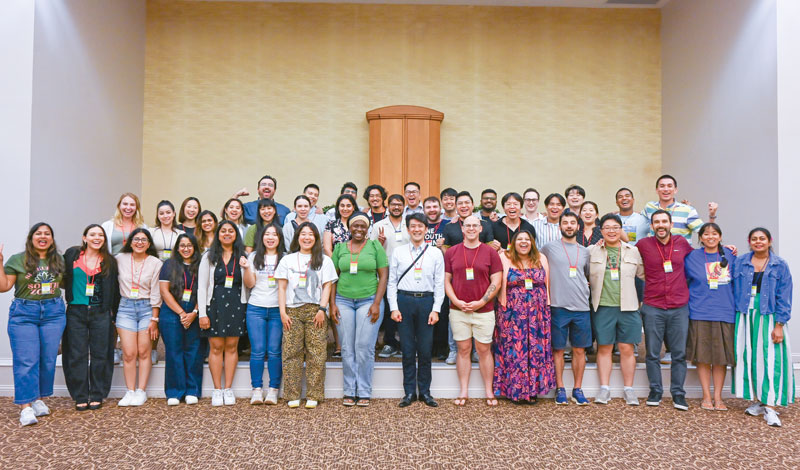
Decide, Chant and Take Action
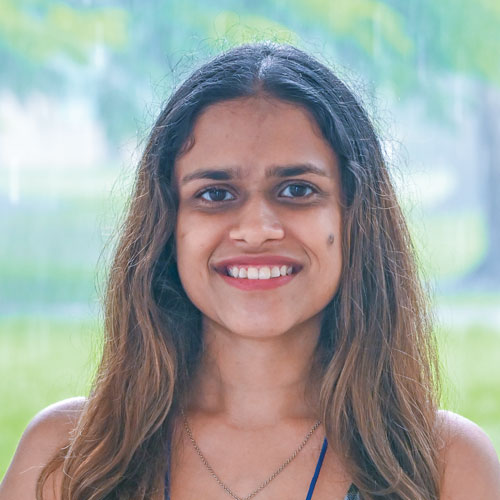
Priyanka Kuchhal / Philadelphia
Living Buddhism: Priyanka, thank you for speaking with us today! How did you begin your Buddhist practice?
Priyanka Kuchhal: My sister started chanting when we were living together in India. At first, I wasn’t interested in practicing Buddhism, but I heard her chanting all the time and soon, I began to too. I feel very fortunate to have been in that environment because I don’t think I would have practiced otherwise. After that, my mom and brother started chanting. When I moved to Buffalo, New York in 2018 to pursue my master’s degree, I received the Gohonzon.
Wonderful. We understand this was your second study conference. What was your impression of this one?
Priyanka: I wished more young women could attend and experience this kind of in-depth study. In daily life, we get so caught up in things, but Mr. Harada brought us back to the basics of Buddhist practice—the things we often overlook. For example, remembering that both you and the person in front of you are Buddhas. These basic concepts sound simple, but applying them is difficult.
It sounds like it was a great reminder of how to practice.
Priyanka: Yes. My main struggle is truly believing. It’s easy to read guidance or study Buddhism and think, That’s nice to hear, without going further. My seniors in faith often encourage me to go deeper, reminding me that faith is profound. Right now, I’m chanting every day to believe in my potential, to believe in the power of faith. Mr. Harada emphasized many times that we are no different from Shakyamuni or Nichiren. I’m working to bridge that gap in my mind.
How do you do that?
Priyanka: During the lecture, I was constantly asking myself: What is the intent, what does it mean and how can I apply it to my life? This is how I read Sensei’s guidance now. I don’t just flip through pages, I’m trying to understand it more deeply.
Were there any other takeaways?
Priyanka: Yes, especially from the youth Q&A session with Mr. Harada. One youth asked about being afraid to face their problems in front of the Gohonzon. Mr. Harada said all we need is to decide, chant and take action. But he stressed that deciding is the most important step. Once you decide, you clear away confusion and devilish functions. For me, when challenges come up, I tend to reach the decision point much later. Now, I’m determined to decide to win sooner!
What kinds of goals and determinations do you have?
Priyanka: Toward 2028, SGI-USA is striving to welcome 10,000 youth. As a zone young women’s leader, I’m determined that Pennsylvania Zone will achieve tremendous growth. There are new youth in our zone, and I want to convey to them that expansion begins with solidifying our own foundation in faith, not just getting fixated on what needs to be done. I’m determining to create a strong foundation myself. Personally, I’m chanting for a harmonious family and to firmly base my life on faith and my sense of mission.
You are reading {{ meterCount }} of {{ meterMax }} free premium articles

